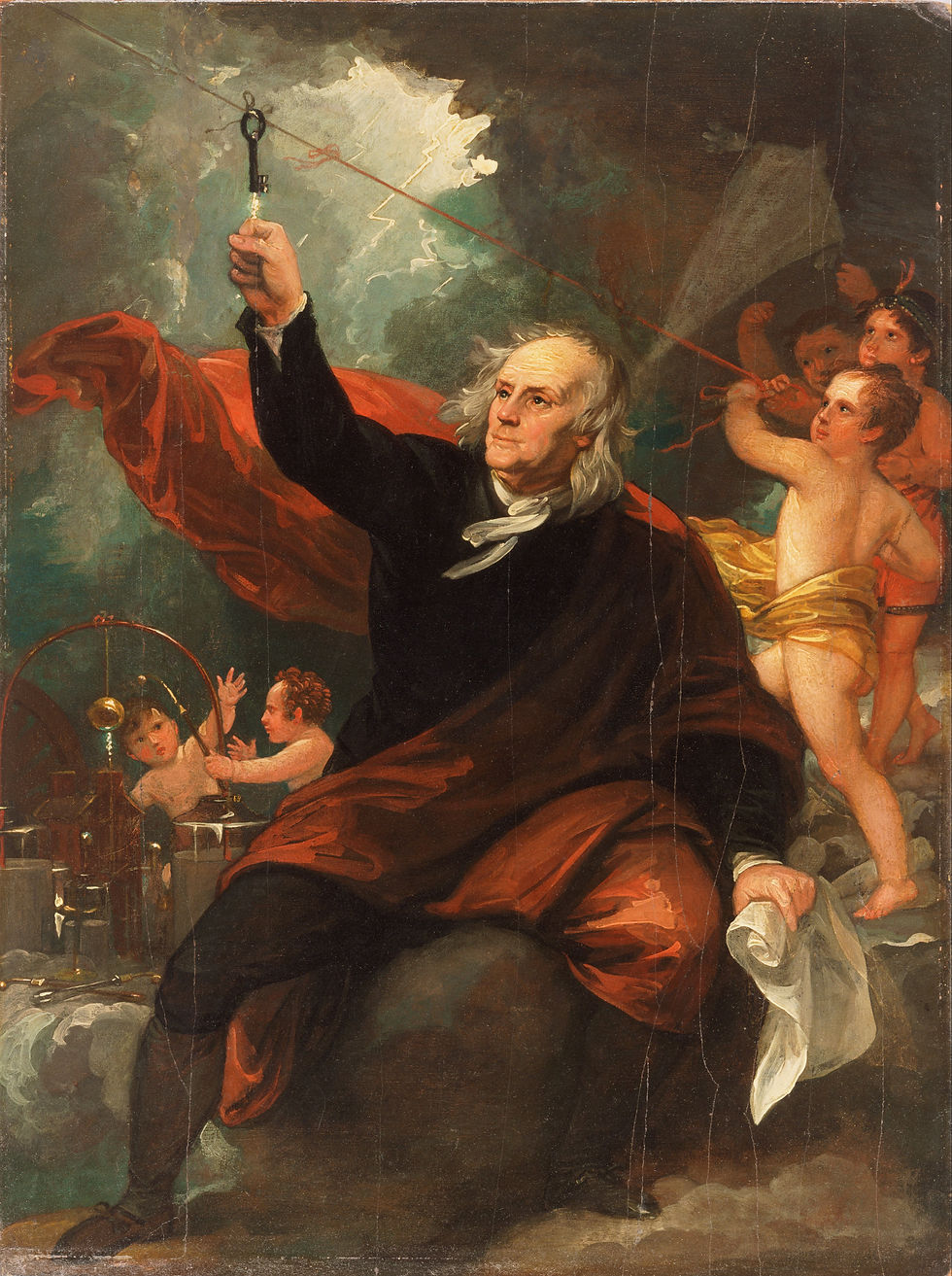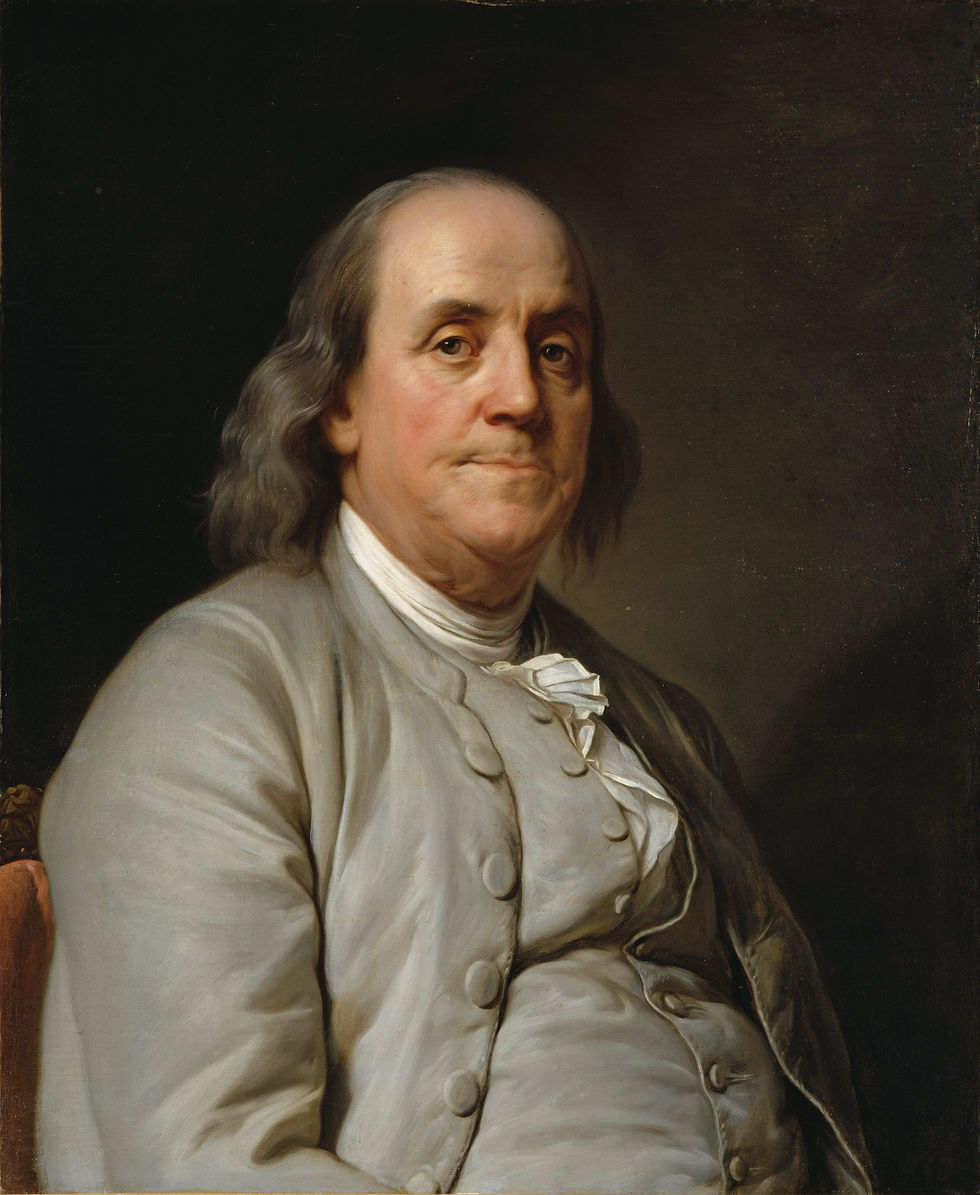One dark and stormy night
- James Tyler
- Dec 1, 2022
- 3 min read
If the Darwin Awards were around back in 1752, you might think that Benjamin Franklin could have been in the running for one. The awards after all honor those among us who improve the human gene pool by taking themselves out in some crazy way. Going outside during a spring thunderstorm, with lightning crackling about overhead, to fly a kite could have made Franklin a contender.
Thankfully, the famed inventor wasn’t turned extra crispy. On that night of June 10, Franklin was conducting another of his experiments in electricity. For about a decade, the former printer turned scientist had been trying his hand at a variety of electrical studies.

Electricity was a hot topic of exploration then but was not too well understood. So that night Franklin, accompanied by his son, William, flew a kite during the thunderstorm in an attempt to collect ambient electrical charge into a Leyden jar.
Franklin had borrowed a house key from his friend Benjamin Loxley, who had helped him with previous experiments. Franklin tied the key to the kite’s string to attract electricity from the storm clouds.
The whole experiment was to prove that lightning and electricity resulted from the same natural phenomenon. He wanted to conduct electricity from the air down the kite’s wet string to the ground. It’s a good thing for Franklin that a lightning bolt didn’t actually strike the kite.
There’s much more to that experiment than just a kite and key, and it did help Franklin show that lightning is electrical in nature. It also made him world famous. And this was before he became one of the founding fathers of American democracy.
Photography hadn’t been invented yet when Franklin was out in the storm experimenting with his kite and key. So we don’t have a shot of that dramatic scene. We do, however, have various artistic renditions of the moment.
One of the most famous was created by Benjamin West in 1816 (Benjamin seems to have been a popular name back in the day). His painting – “Benjamin Franklin Drawing Electricity from the Sky” – depicts the 42-year-old scientist, inventor, printer, philosopher, etc. holding a hand up to the dangling key as a stream of electricity sparks between his hand and the key.
It's a dramatic painting showing Franklin wind-whipped by the storm but not accompanied by William. Instead of his son, there are a number of what seem to be cherubs or angels holding the kite string as well as performing an electrical experiment in the background. The highly Romanticized painting is now exhibited at the Philadelphia Museum of Art.
West and Franklin had been friends in London from 1765 to 1775. While serving as the president of the British Academy of Art, West painted the heroic depiction of his old friend years after Franklin passed away on April 17, 1790.
The artist is famous as a historical painter with works like “The Death of General Wolfe” and “Penn’s Treaty with the Indians,” but he was also a portrait painter and created works focused on biblical and mythological themes. His “Cupid and Psyche” is pretty intense, for instance.

Franklin lived a dramatically full, meaningful life, and there are many famous works of art that spotlight his numerous achievements. His face is well known as the obverse (front side) image of today’s U.S. $100 bill, created by French artist Joseph Duplessis. It’s a serene picture of the acclaimed statesman, suitable for currency.
West’s dynamic painting of that wild night of scientific discovery back in 1752, though, really sparks!
Image credits
Benjamin Franklin Drawing Electricity from the Sky, c. 1805, by Benjamin West, Philadelphia Museum of Art
Benjamin Franklin, 1778, Joseph Duplessis



Comments